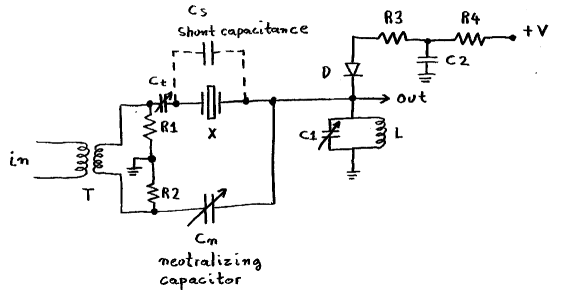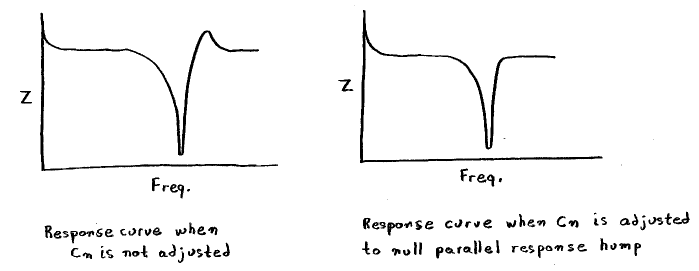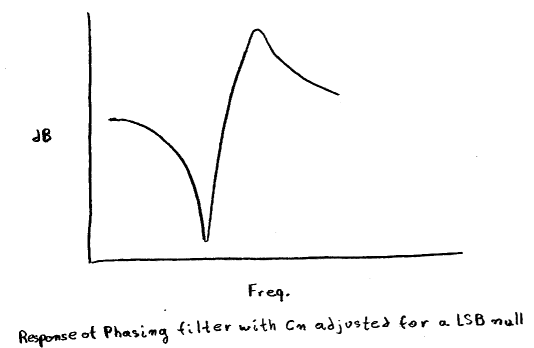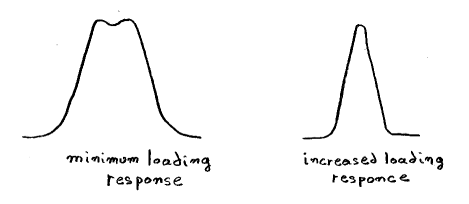
Ultra narrowband adjustable shape and bandwidth crystal phasing filter
by SV3ORA
The simplest crystal filter employs the use of a single crystal. It uses the very high Q of the crystal and its response is asymmetrical. This filter is too narrow for most applications including SSB and it has a bandwidth of a hundred Hz or less. This bandwidth is ideal for CW and CDW modes where high degree of unwanted signal rejection is needed. The crystal filter presented here is a phasing filter type. It uses a single crystal and utilizes a technique to vary the bandwidth of the filter.

The capacitor Ct allows the peak of the filter response to be raised in frequency and thus to tune the band pass frequency of the filter. To my experience this capacitor also affects the amount of RF energy passed to the crystal. The figure below illustrates the impedance response versus frequency curve of a quartz crystal. Capacitor Cn neutralizes the stray shunt capacitance Cs around the crystal so the response of the crystal is equivalent to a series tuned circuit with a very narrow band pass.

Capacitor Cn is called the phasing control. If this is set to a minimum value, the filter has a form which is an almost symmetrical band pass shape. As it's value is increased, a notch appears in the stop band as figure below shows. This notch progressively rises in frequency towards the pass-band peak. By careful adjustment of this capacitor, a nearby interfering signal could be nulled out. A characteristic of the phasing filter is that when it is adjusted for a stop-band null, the attenuation of the peak is reduced.

The total bandwidth of the filter is a function of the crystal output load, which is primarily the parallel resonant circuit C1, L. Therefore, the total bandwidth becomes a function of the Q for the resonant circuit. The Q of the output load circuit for the crystal is varied by changing the bias of the diode D, which changes the shunt loading across the parallel-tuned circuit C1, L.

As the forward bias of D is increased, the Q of the parallel resonant circuit decreases and the response characteristic of the crystal becomes the dominant factor in determining the bandwidth of the filter network. The crystal response is very narrow, so the the filter bandwidth is decreased as the diode forward bias increases.